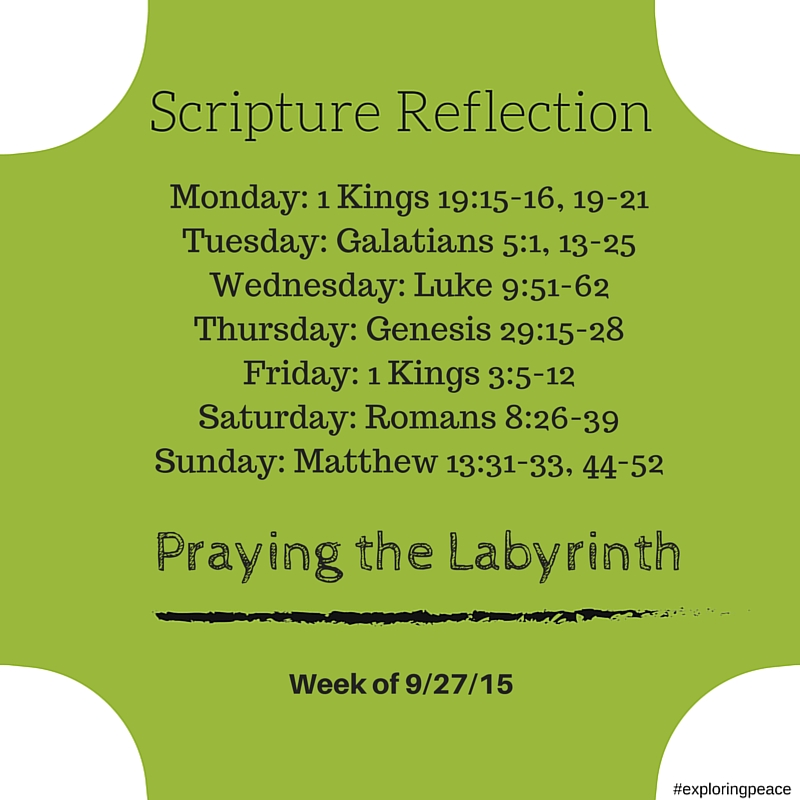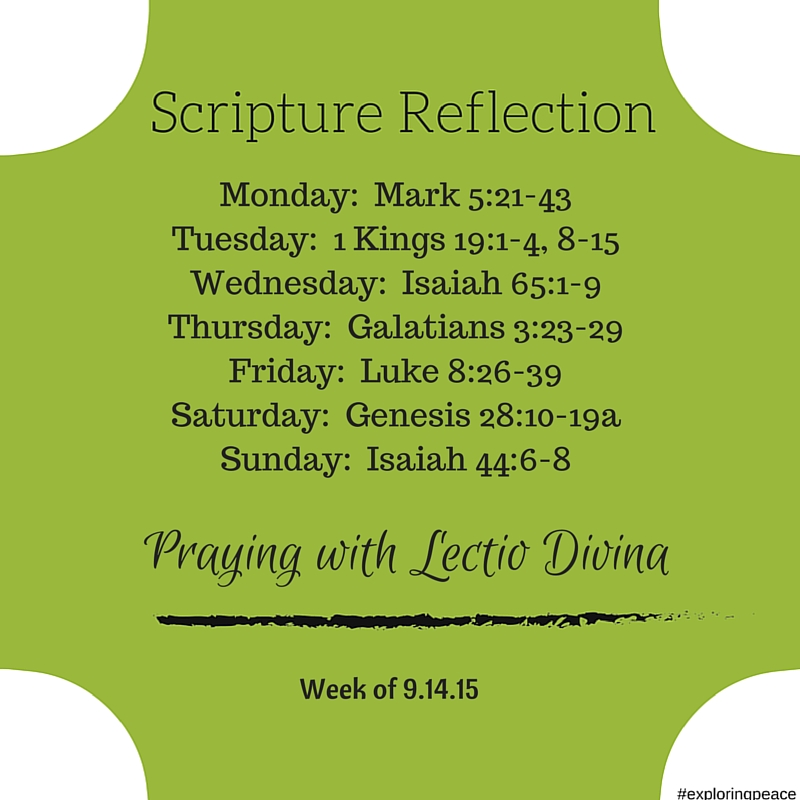|
Walking a labyrinth offers a sacred and stable space to focus your attention and listen to your soul. This ancient walking style of meditation is sometimes referred to as a prayer walk and can serve as a powerful tool for transformation. It's one of my favorite ways to pray (I say that a lot, don't I?!). If this style of praying is new to you and you live in the Nashville area, why not join me? This Thursday at noon, I'll be leading a labyrinth walk at Donelson Heights UMC. Click here to let me know you'll join me! What is a Labyrinth? For Millenia, pilgrimages to holy sites have been part of the Christian tradition. However, when a pilgrimage was not possible, the discipline of this spiritual journey was found on the labyrinth as a symbolic prayer walk. By walking the labyrinth today, we are rediscovering a long-forgotten tradition found in various traditions and forms around the world. While labyrinths have a history that can be traced back thousands of years, their beginning origin is unknown. No matter the style of the labyrinth, structurally, it has only one path so there are no tricks and no dead ends. The path winds throughout and becomes a mirror for where we are in our lives, each on a journey. Walk it with an open heart and mind as you allow God to touch your sorrows and release your joy, allowing your soul to sing. What a Labyrinth is Not? It is important to keep in mind that a labyrinth is not a maze. A maze is designed to confuse you, a cognitive puzzle (mazes only entered our world’s culture about 600 years ago). A labyrinth has only one path that leads to the center, designed to easily find your way making space for prayer and meditation. Why Walk the Labyrinth? The labyrinth offers a sacred and stable space to focus your attention and listen to your soul. It is a wonderful place to pray. However, the experience is different for everyone because each of us brings different raw material to the labyrinth. As with any spiritual discipline or prayer practice, we bring our unique beliefs, hopes, dreams, history, and longing of the soul. Leave behind what may not serve you as you journey toward union with God in quiet reflection. How Do I Walk the Labyrinth? Try to not have expectations, simply enter into the journey and use your senses to move your body forward in prayer. Before you walk, quiet your mind and become aware of your breath. Ground your feet and let go of any expectations. Simply have an open mind and do what feels natural. You may wish to choose a prayer, centering word, or phrase to avoid a wandering mind. Some find simply focusing on their breath helps them remain in the present. Allow yourself to find the pace your body wants to move forward (skip, dance, or walk very slowly). Those going in on the path will meet those coming out. You may "pass" people or step to your right and let others step around you. Do what feels natural. Afterward, you may wish to sit quietly and reflect, journal, create, or simply give thanks. You may find the following three stages helpful for your walk:
The above information was compiled from the research of Lauren Artress using her guides, "Walking A Sacred Path” and “A Sacred Path Companion” as well as the Grace Cathedral Website. If you've stumbled here for the first time, welcome! Since this summer, I've posted a short list of scriptures for weekly reflection as well as a different way to pray each week. Pray one scripture or pray them all, this is simply an invitation to journey deeper as we explore God's peace together through a variety of prayer styles.
And while this is the last week of this series, you can click here to discover more of the prayer practices we've explored together! Friends, it feels like confession time!
My cup runneth over this week with wonderful opportunities for my roles with family, work, school, and ordinary life responsibilities. There is not a in-depth post in me this week, not even a cute graphic with suggested scriptures. But there is an invitation! This week, take a nice deep breath and just pray. No new tips. No suggestions. Just a verse to ponder and an invitation to pray: Pray with Simplicity “And when you come before God, don’t turn that into a theatrical production either. All these people making a regular show out of their prayers, hoping for stardom! Do you think God sits in a box seat? “Here’s what I want you to do: Find a quiet, secluded place so you won’t be tempted to role-play before God. Just be there as simply and honestly as you can manage. The focus will shift from you to God, and you will begin to sense his grace. Matthew 6:5-6 (The Message) Quite possibly, Lectio Divina might just be my favorite way to pray in this season. I know I say that a lot. So, maybe I don't have a favorite way to pray. But, I really like pondering and chewing on scripture. That is the art of Lectio Divina. Latin for spiritual or holy reading, Lectio Divina is an ancient prayer practice that allows us to listen for God’s activity using scripture. This style of prayer lets us listen with an open heart for God’s activity in our life today as we connect to God through the written word. Lectio Divina focuses on the formational reading of scripture rather than the informational reading to gain knowledge about God’s word. While both are important processes, this art is seen as a more personal way to interact with the word of God. Lectio Divina is an ancient monastic practice that has been modernized by academia with consecutive steps to the process that were likely not defined when it was practiced in the 6th century. For this reason, you'll find varying outlines for the practice in books and across the internet. For all practical purposes, the steps are the same and the process is simply an invitation to enter in to a time of conversation and contemplation. You'll read, reflect, respond and rest in God's word. For those of us who enjoy Bible study, it can be challenging to set down your commentaries and highlighters and simply settle in with God's word with this style of prayer and listening. Yet the rewards have been evident for me as I experience both big and small glimpses of hope and encouragement for how God speaks today through the ancient text of the Bible. Don't come with expectations, just come and listen. Here is a simple overview of Lectio Divina you can explore this week: Read, Reflect, Respond, Rest
If you've stumbled here for the first time, welcome! On Mondays through this Fall, I'm posting a short list of scriptures for weekly reflection as well as a different way to pray each week. Pray one scripture or pray them all, this is simply an invitation to journey deeper as we explore God's peace together through a variety of prayer styles. Click here to find out more and join us on the journey.
Peace, Whitney |
Whitney R. SimpsonClick to connect: Categories
All
Content @ 2010-2023
Whitney R. Simpson Exploring Peace Ministries, LLC |



 RSS Feed
RSS Feed
